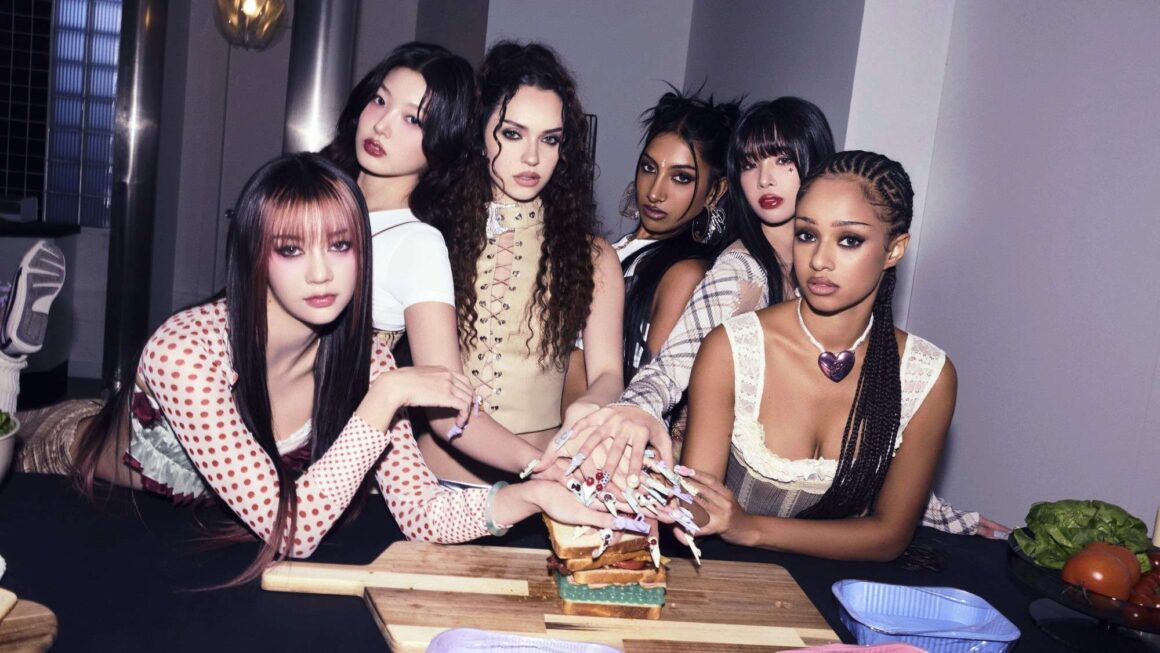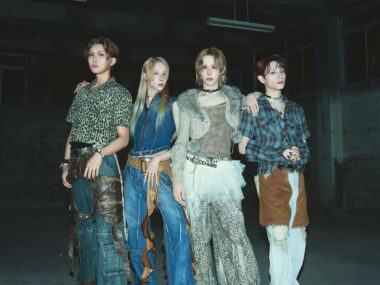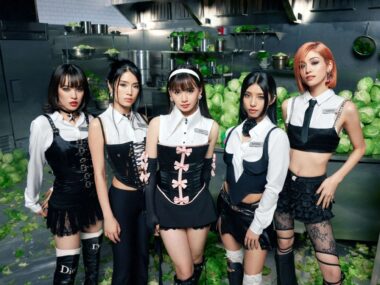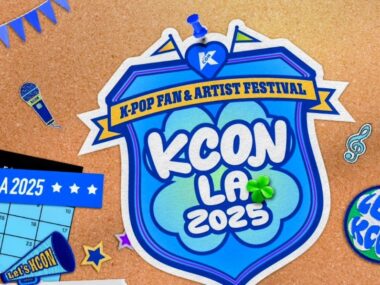At this point, I’m not even shocked, just disappointed. KATSEYE was supposed to be HYBE and Geffen’s big global girl group. However, instead of letting the girls’ talent speak for itself, we’re here talking about a moaning sound layered into the beat of their song Gnarly.
Yes, you read that part correctly.
That Moan in Gnarly
Music producer and content creator Jarred Jermaine pointed out a sound in KATSEYE’s Gnarly that resembled a woman moaning. The producer behind the track, PinkSlip, mentioned he wanted to add something extra to the track, but didn’t actually deny what it sounded like.
“If you zoom out a little bit from the audio clip, you can maybe see where the sound is from. You can take a guess,” PinkSlip said. Even Jarred seemed shocked by the implication.
It’s not hard to see why people were upset. KATSEYE has members who are minors, and this song with all its loaded sound effects, was performed at the Kids’ Choice Awards. That’s not just tone-deaf, it’s irresponsible. For many fans, it felt like yet another example of a long, frustrating pattern.
This Isn’t New. It’s a Pattern.
HYBE has been called out repeatedly for rolling out sexually suggestive lyrics, choreography, or styling for groups that include underage idols. And when it’s not blatant, it’s subtle enough to fly under the radar until someone points it out.
Take the choreography in Gnarly: twerking, butt-slapping, and outfits that show bras. Or the symbolism in the video: scenes with flies mating and the members depicted as literal “fresh produce.”
It’s a similar story across other girl groups under HYBE:
- NewJeans: When Cookie dropped, fans immediately flagged the lyrics as innuendo. The line “baked it just for you, but you know that it ain’t for free…” doesn’t hit the same level when most of the members were barely 15.
- LE SSERAFIM: Their debut song Fearless had suggestive floor choreography and included members who were 14 and 16 at the time. Later, Smart added suggestive choreography into the mix.
- ILLIT: Their English track Baby It’s Both has lyrics like “Wanna up, up, up all night” and “You wanna make me scream,” while two members are under 18.
- KATSEYE: Beyond Gnarly, the girls are usually scantily dressed and dancing in ways that are clearly meant to be provocative. Again, half the group is under the age of 20.
It’s not just the girl groups that are affected by this.
- ENHYPEN: Ni-ki performed the sultry track Fever at just 15 years old.
- BTS: During their early years, underage members like V, Jimin and Jungkook were told to flash abs and play up their appeal in ways that now feel… exploitative in hindsight.
They Said It’s “Empowerment”
Fans of HYBE groups defend the company by claiming detractors are “reading into it.” Or, “They’re strong, edgy, independent women.”
You can call it “girl crush,” “artistic expression,” or “bold confidence”. When minors are the ones performing it, the intent doesn’t matter as much as the impact. It’s not empowering if the girls haven’t grown enough to fully understand how they’re being perceived or marketed.
Consent from minors is tricky territory. Of course, some of these idols probably said yes to these concepts. But at 14, 15, 16, can you really grasp the long-term consequences of being sexualized on a global stage?
Even SHINee’s Taemin has spoken about the damage that kind of early exposure can have. And we’ve all seen how Hyuna’s career was shaped and scrutinized by how she was packaged from a young age.
The Bigger Problem: Normalizing It for the Entire Industry
HYBE isn’t just a big label. It’s the label behind BTS, NewJeans, SEVENTEEN, LE SSERAFIM, and now KATSEYE. Whatever they do becomes the blueprint for everyone else. And that’s what’s so alarming.
When HYBE continuously rolls out groups that feature underage idols in provocative outfits or doing suggestive choreography, it sends a message: “This is normal. This sells,” and other companies will copy it.
So even if fans raise concerns, the industry keeps pushing the envelope. Why? Because HYBE does it and still racks up views, streams, and headlines. The line between edgy and exploitative gets blurrier every comeback.
What’s worse is that the very demographic HYBE wants to capture, Gen Z, are the ones most against the sexualization of young people in the media. They want real talent, real emotion, and real respect for boundaries. Instead, they’re being handed moans buried in beats.
So, What Now?
This isn’t just about a weird sound in a single song. It’s about a trend. A strategy that keeps getting recycled despite the backlash.
HYBE has the power and the influence to change how young idols are presented in K-pop. They could shift the standard. They could debut and promote groups in ways that celebrate artistry, skill, and youth without exploiting it.
Instead, they’ve shown a consistent pattern of doubling down on and of ignoring criticism until it goes viral. If the biggest agency in K-pop doesn’t change course, how can we expect the rest of the industry to?






